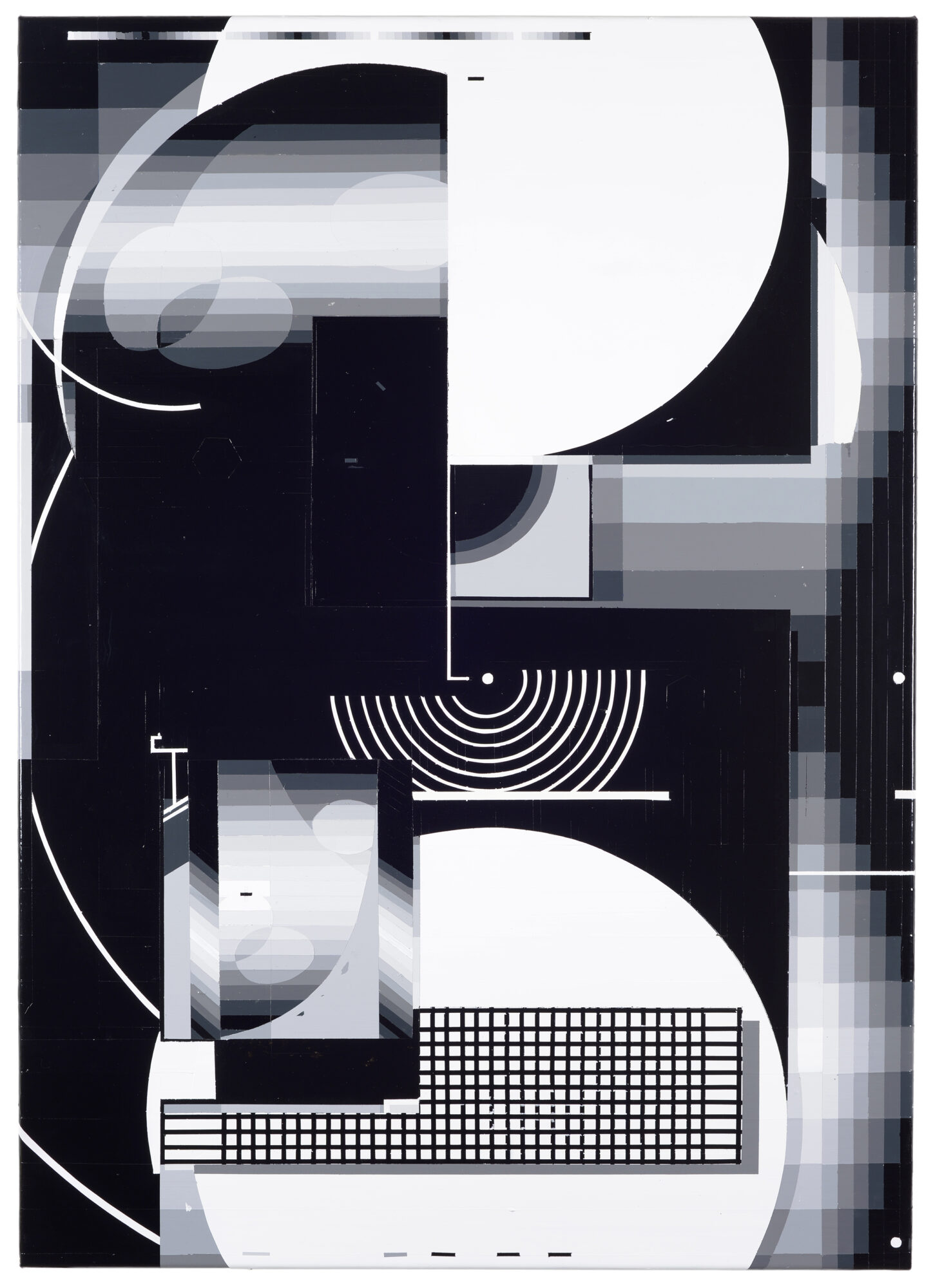
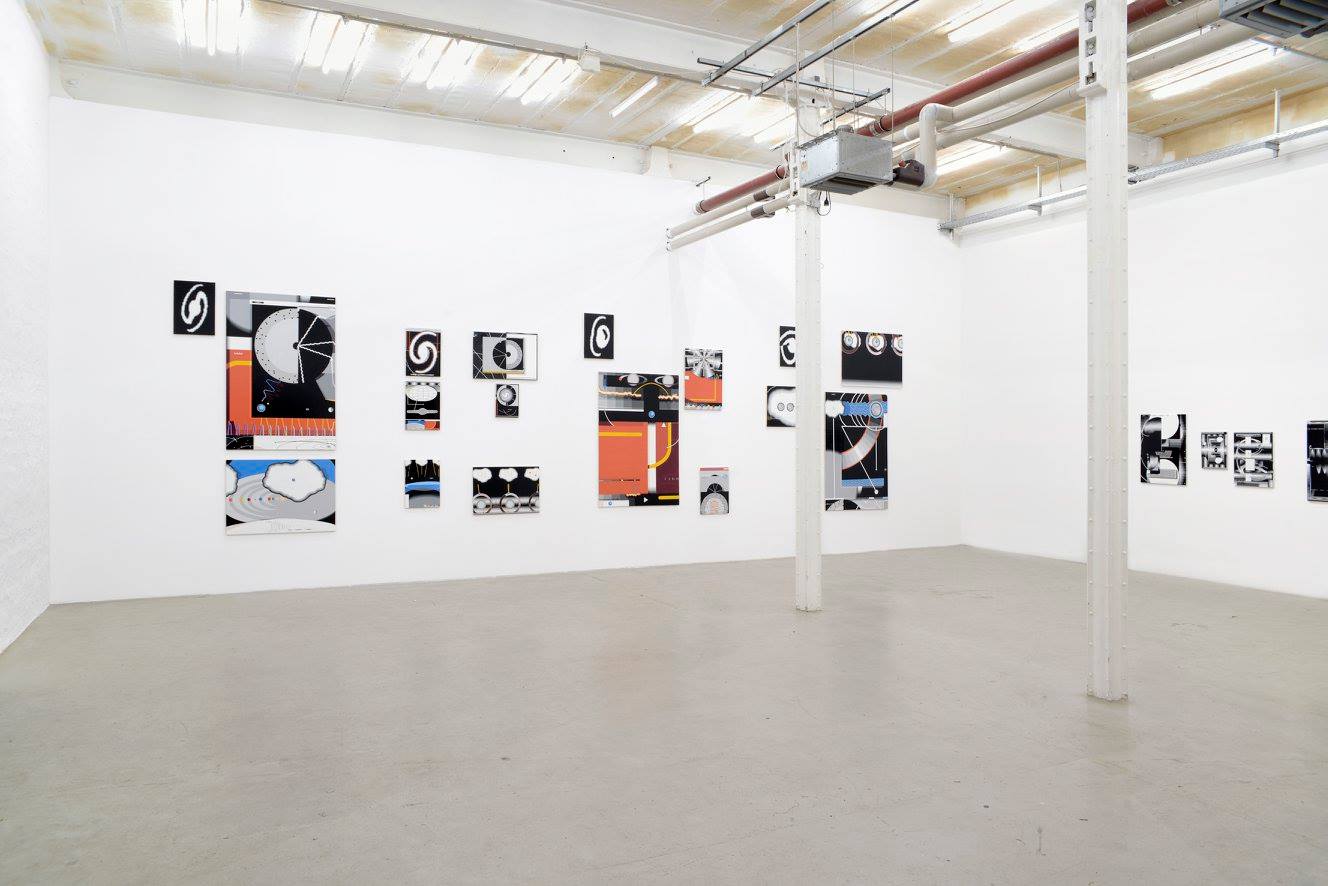
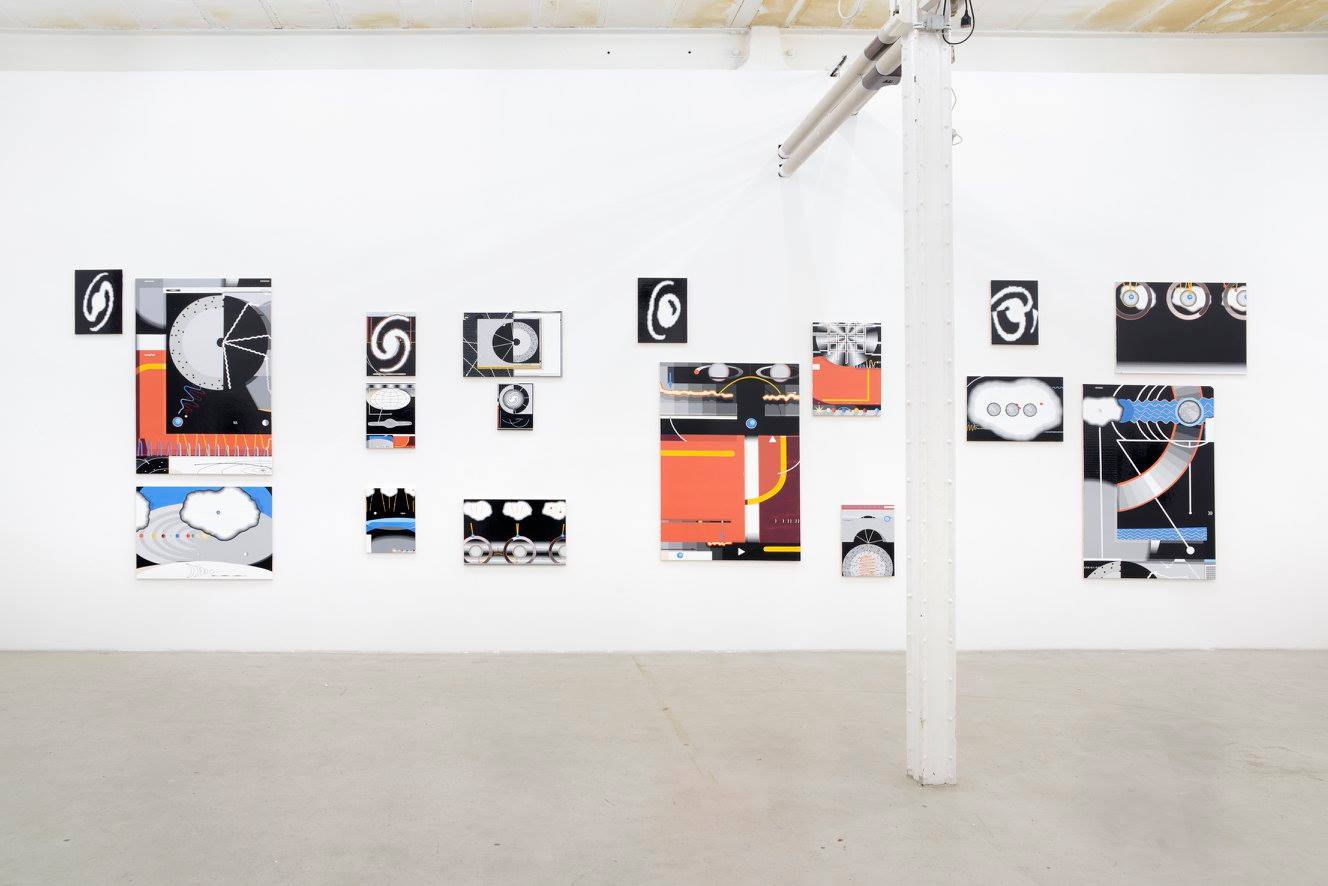
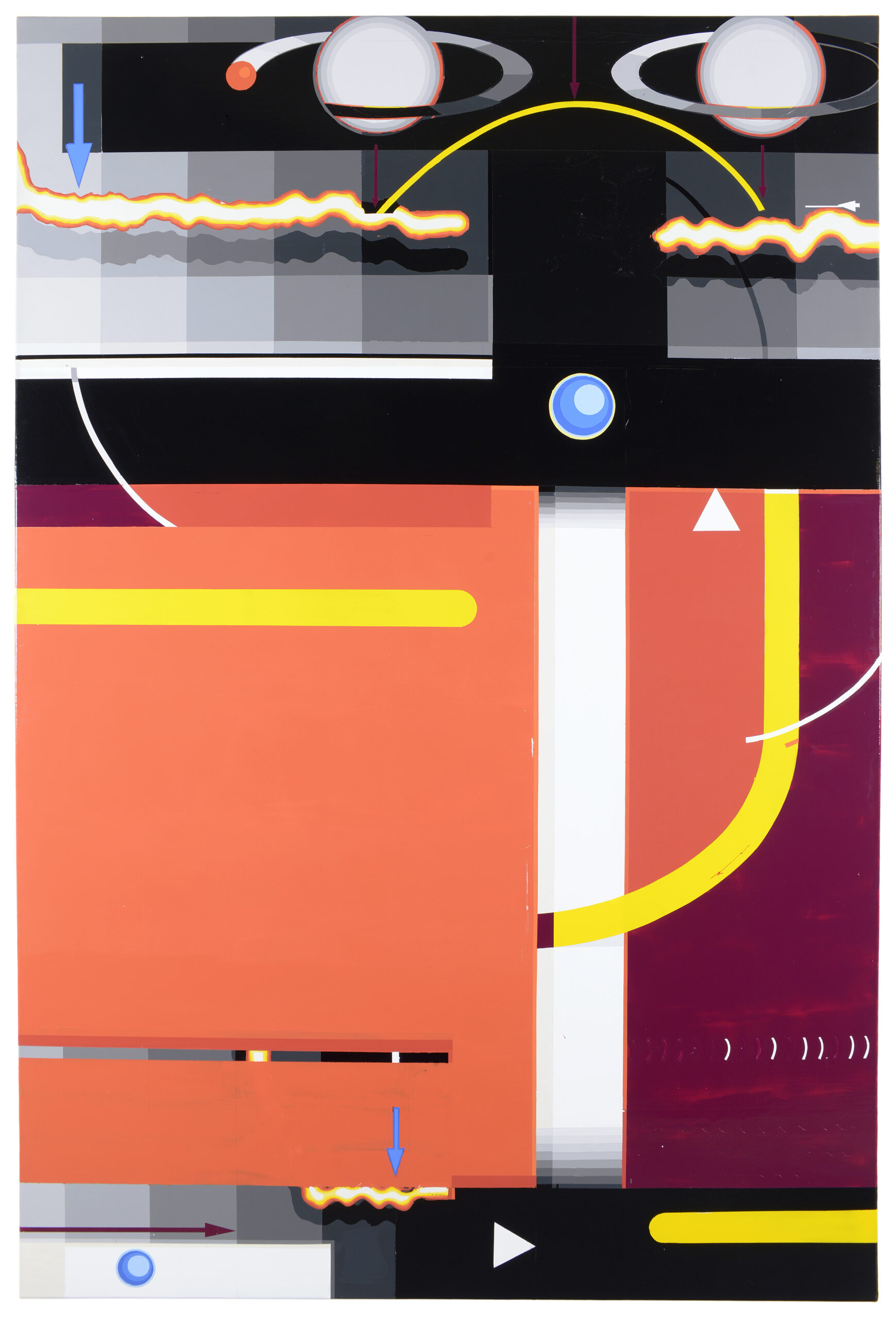
Varnish on canvas
165 × 110 cm

Varnish on canvas
60 × 42 cm
“This is a present from a small distant world, a token of our sounds,
our science, our images, our music, our thoughts and our feelings.
We are attempting to survive our time so we may live into yours.”
message on the golden record on Voyager, 1977
Interstellar Archeologists
Messages from the event horizon of knowledge
People say that first impressions really matter. In the
case of intelligent, extraterrestrial entities capable
of abstract thought, that may potentially learn about
human civilization, that first impression might
originate from a golden record. In 1977 NASA sent
shining, gold, circular volumes of auditory and
visual data into space with the space probes
Voyager 1 and 2, as a testament to our species:
our planet, our culture, our language, our
environment, and our scientific achievements —
but tactfully omitting our wars, transgressions,
crimes, ideologies and self-destructive tendencies.
An idealized, distorted image.
First impressions matter – we do not want to
be deemed homicidal and exploitative. Quite the
contrary: we aim to be portrayed as beings of
cultural and scientific prowess; self-aware,
empathetic and enlightened; as explorers and
discoverers. Five years before the launch of
Voyager, scientists — among them Carl Sagan —
sent the Pioneer space probe on its endless
journey with plaques on board. Aside from a
controversial depiction of a man and woman, the
engraved message focused especially on symbolic
representation of natural scientific findings:
the position of the sun relative to the center of the
Milky Way, a schematic depiction of our solar
system, the hyperfine structure of the hydrogen atom.
Universal knowledge for the universe.
No man-made object has ever ventured further than
the Pioneer and Voyager space probes. Over 20
billion kilometers from the sun, Voyager now travels
through interstellar space, through the final frontier,
as pop culture would have it. And even though
popular science and science fiction have been
committed and ambitious in trying to acquaint
mankind with the notion of infinity, numbers and
dimensions still defy the imagination: before its
expiration date, the space probe will float through
the gigantic void that is the universe, through
planetary and dark nebulas, interstellar dust, and
the remnants of supernovas for 500 million
years. In 38,000 years it will approach another star
for the first time, at a distance of 1.7 light years:
AC+793888, located in the constellation Ursa Minor.
It is an idea as tantalizing as it is unlikely: the space
probe one day being found by extraterrestrial life
forms, possibly having embarked from their home
planet in the local supercluster, which encompasses
within its 200 million light year radius 2,000 galaxies
just like ours. Embarking on a quest to explore
new galaxies, new life forms and civilizations. At this
point in time, mankind has likely ceased to exist.
To acquaint oneself with the essence of mankind
could mean to contemplate it through its relics,
as an interstellar archeologist. The first impression
of man: a life form of symbols and formulas.
But how universal is a symbolic depiction of an
atom? How accessible are the schematic depictions
and signifiers of human mathematics, physics
and chemistry — a circle, wavelengths, an orbit,
a planet — if the contextual distance is as far as
a galaxy? How fragile is knowledge, acquired over
thousands of years, in relation to the infinity of
the cosmos? How anthropocentric is science, not
to mention the semantics and semiotics of our
language? Are history, psychology, reason — and
the lack of it — adequately expressed through
our fragmented remnants?
The experience man gathered as he shaped and
explored the world, the knowledge arduously
acquired and produced; that he categorized and
catalogued; squeezed between book covers
into lexicons, anthologies and encyclopedias; that
he protected and defended from self-created myths
and religion; and used in preparation and
justification of savagery, annihilation and destruction;
that was expressed in movements of both
emancipation and counter- enlightenment; that he
condensed and compartmentalized into areas of
expertise, and finally deconstructed and thus
questioned and challenged all over again — what if
this decadence of knowledge vanished completely?
What if it became a flickering, whirring buzz of
symbols in space, a variation of statements devoid
of meaning, a toolbox of shapes and forms only
serving the aesthetic?
This fundamental, ever-present human fear of decay
and decline does not concern the curious outside
observer. And as the self-declared, human polymath
dreads the fragmentation of the branches of
cultural and scientific discovery; as scientists fear
the ever-impending refutation of their theses, and
advocates of canonization fear the free appropriation,
accessibility and production of empirical
knowledge; the resident of the local supercluster
— unversed in the human cultures of writing and
language — would encounter an almost infinite
aggregation of signs, symbols, diagrams, schematic
depictions, images and sketches. The division of the
discourses of art and science that is so characteristic
and essential to human culture — a concept not
older than the centuries that passed since the
enlightenment — might appear strange and
negligible to him. Presupposing the physical and
sensory ability to do so, the visual depiction of
mankind may present itself as a playground, a
place to frolic and playfully recombine the symbolic
ingredients of human knowledge.
What if the cosmos of human knowledge — hardearned,
elaborated, revised, discussed, discarded,
compartmentalized and re-compartmentalized,
sometimes fatal — from the viewpoint of the
resident of the local supercluster — lost all
meaning? Without the subtitles of language and
script, interpretations of meaning — much like the
perception of a child — may vary wildly upon
each viewing. The remnants and artifacts of our
civilization would be recombined, similar to
the gears of a clock, assembled in a different order:
seemingly a clock, but not a clock at the same time.
Imitation is an endeavor to gain insight into an alien
world. If so, would the very essence of human
cultural and scientific achievement, its dialectics,
ambivalences and contingencies, rise to the surface
and reveal itself? Is the susceptibility to regressive
mythology, reificatory thought and ideologically
determined forms of society inherent and palpable
in the artifacts of human discovery, creation,
production and distribution?
And while mankind strove to demystify the world,
a rearrangement of these relics would restore that
mystery. In Benjamin Dittrich’s exhibition “Lokaler
Superhaufen” (“local supercluster”), that curious,
enlightened grasp on our mysterious remnants, that
may characterize the viewpoint of an extraterrestrial
anthropologist, is arguably similar to the viewers’
perspective. The inconceivable, non-palpable
properties of our world resurface through a playful
processing of a shattered symbolism of science; and
through an ironic appropriation of its logic and
ethos that once strove to zero in on the meaning of
our existence and inevitable transience, and
who exposed themselves as cults — useful as well
as potentially dangerous — through fragmentation.
What will happen on the dissolving edges of
a knowledge resting on a foundation of rationalism
and intersubjective comprehensibility; what will
happen on the event horizon of science and its
symbols? What happens if, through re-layering
of common knowledge — once a sign of allencompassing
learnedness, new meaning is generated
in a realm where religious and scientific piety, where
knowledge for the sake of control and economic
paradigms of utilization are sidelined for a fascination
and celebration of the infinite?
And finally: What would happen, if after our civilization
ceased to exist, the golden record carried
by Voyager and Pioneer guided alien life forms
to our empty, forsaken planet — what would they
make of our symbols and languages, our books and
libraries, our anthologies and encyclopedias?
Maybe — as man may envision from the vantage
point of humanism — they would be admired and
pondered as artifacts, by curious viewers
somewhere in the center of the local supercluster.
text: Maximilian Haase translation: Lukas Holldorf & Kathleen M. Krol
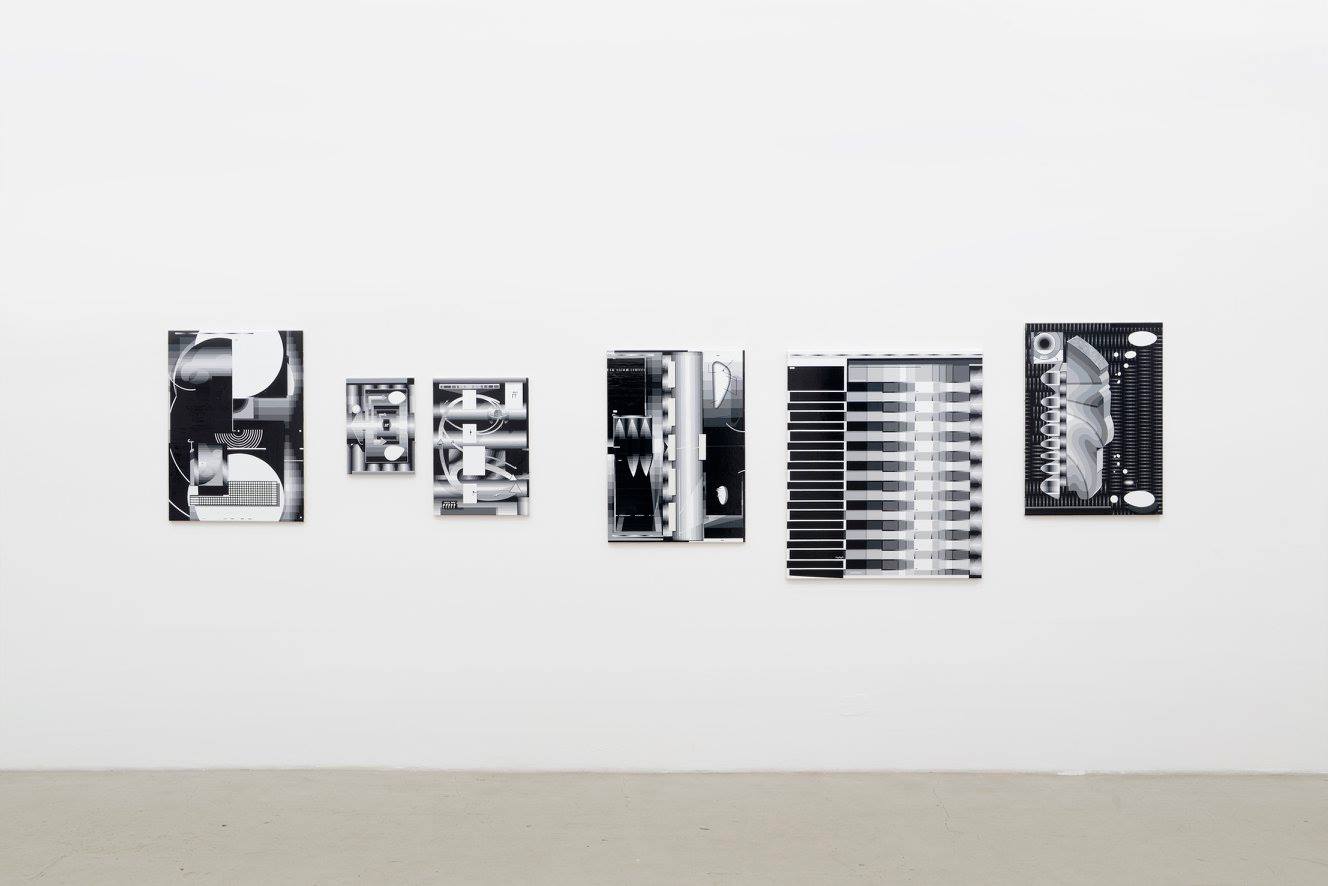

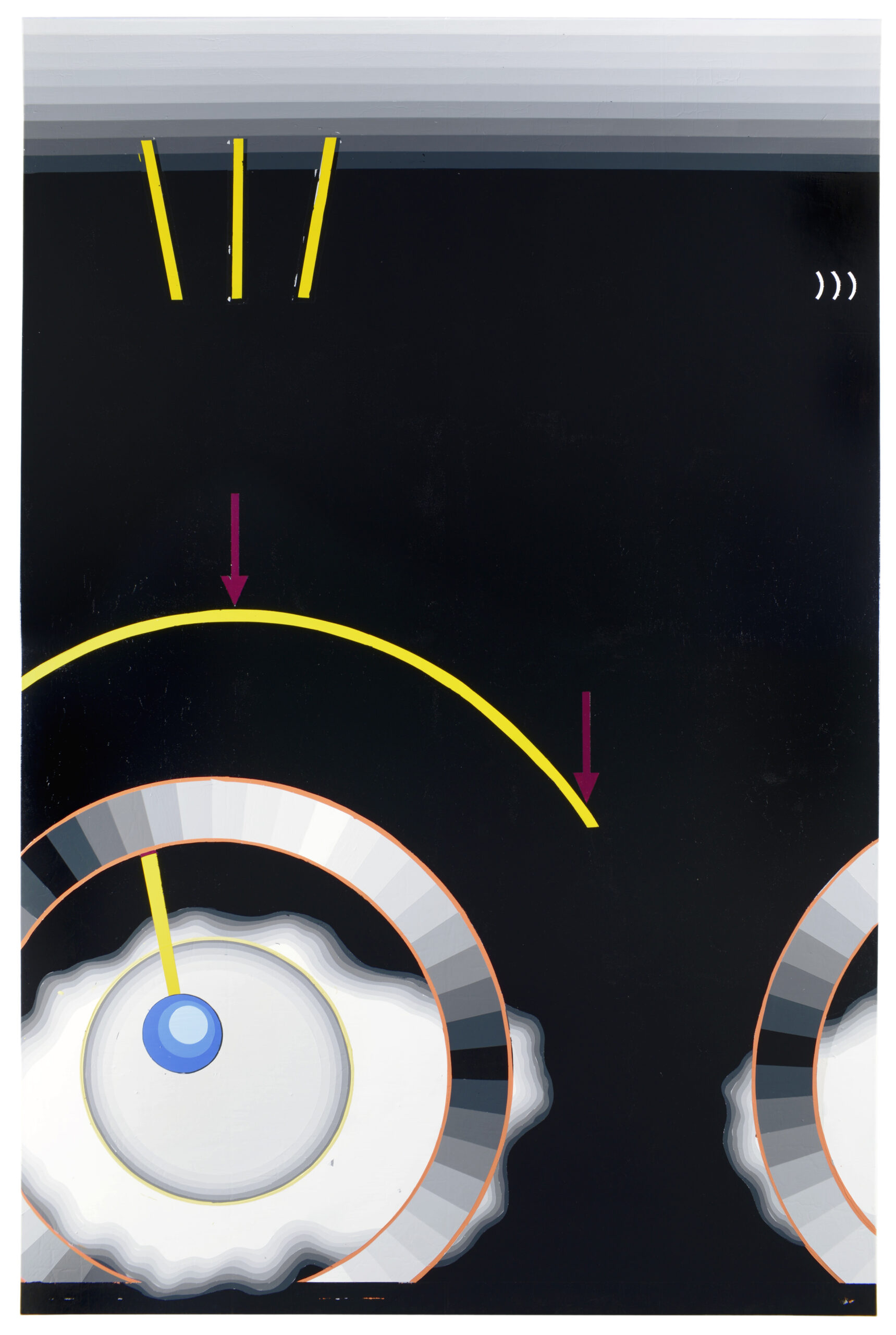
varnish on canvas
230 × 150 cm

varnish on canvas
54 × 39 cm
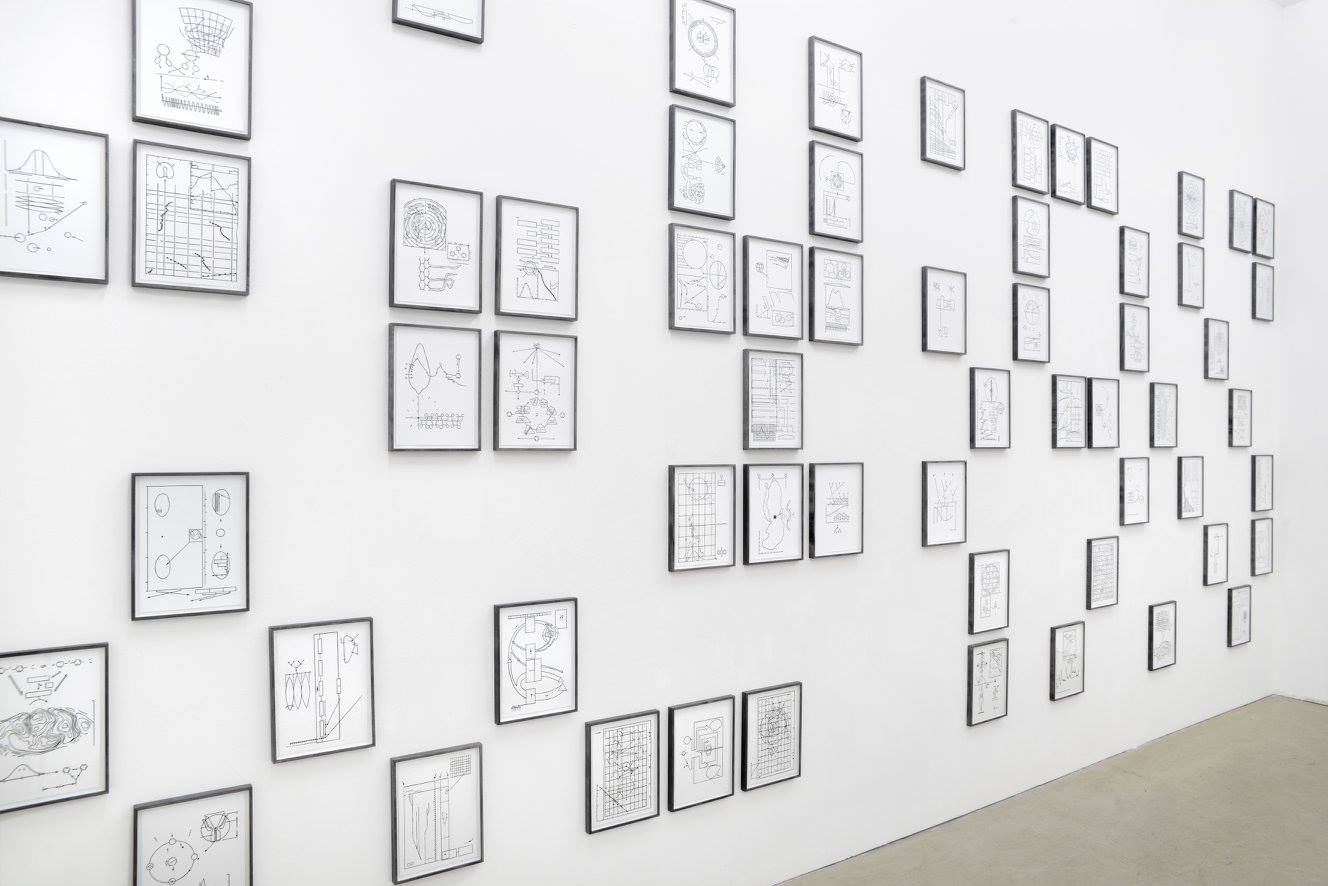
linoleum print on paper
67 piece series, framed, edition of 4
31,7 × 23 cm









